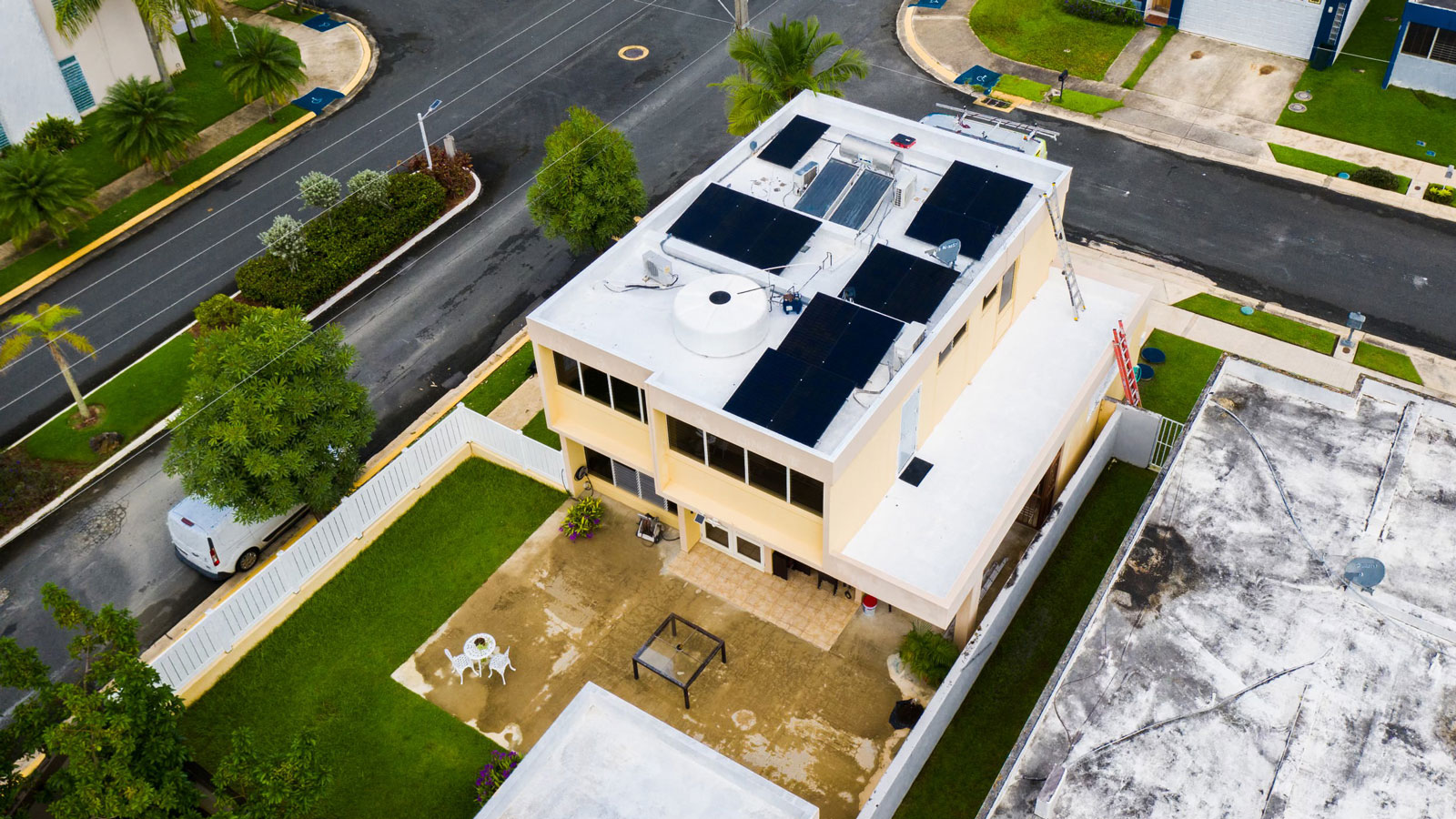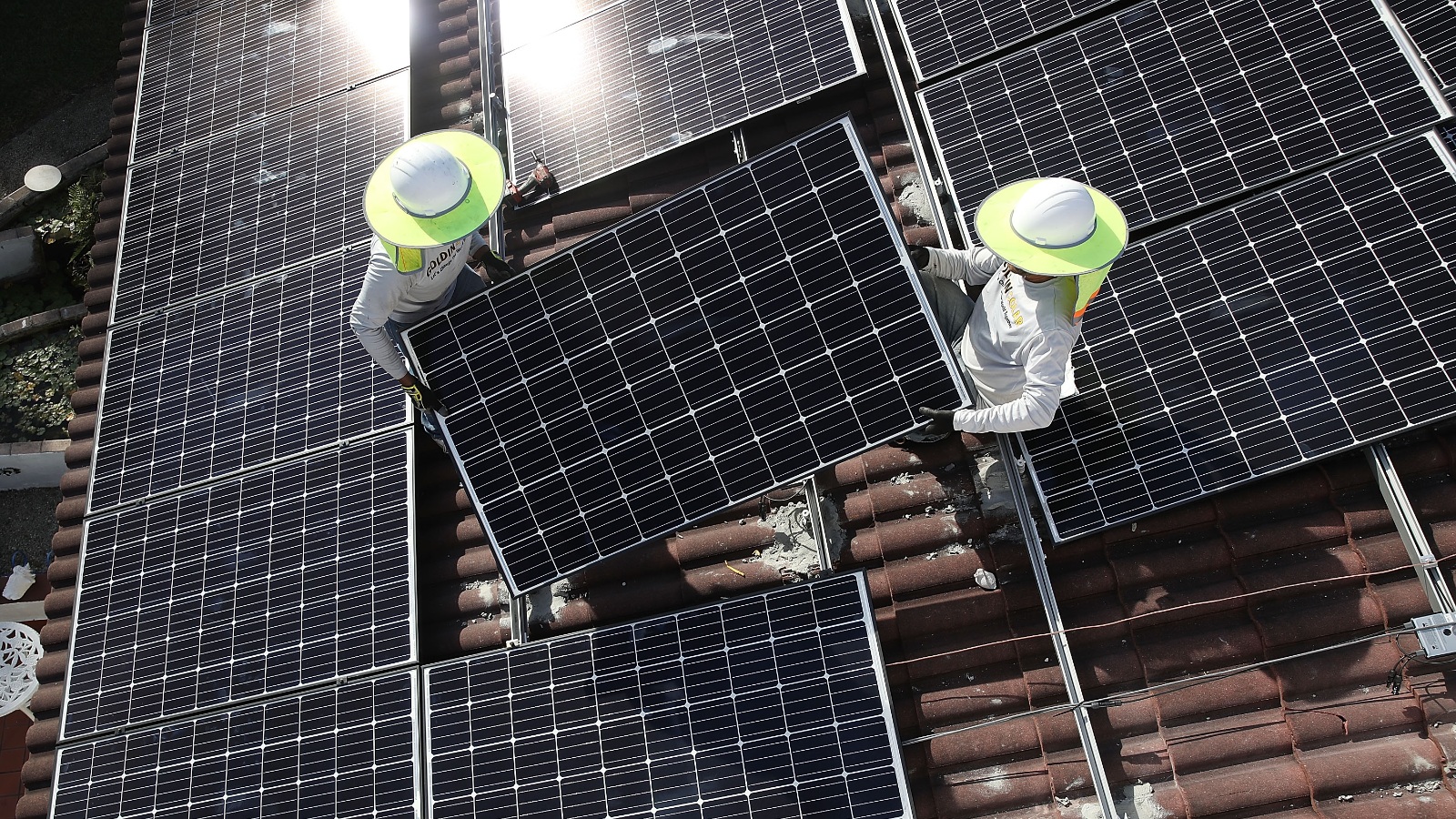Tri-State Generation and Transmission Association, one of the largest rural cooperative utilities in the U.S., is bringing the energy transition home to its massive western service territory. It’s acquiring its first large-scale solar power plants as it prepares to shift away from its current dependence on coal power.
Tri-State generates and transmits power to 41 member cooperatives, which retail to 1 million customers in rural Colorado, New Mexico, Wyoming, and Nebraska (four states, despite the name). The customer base spans 200,000 square miles, more land than the entirety of California, with an average density of just five customers per mile of power line. Just a few years ago, two member cooperatives quit Tri-State to seek cheaper, cleaner power elsewhere. Since then, Tri-State has rolled out a series of clean energy commitments that it says will deliver 50 percent renewable electricity by the end of 2025, up from 33 percent in 2023.
The cooperative announced last week it will buy the forthcoming Axial Basin Solar, a 145-megawatt project in Moffat County, Colorado, and Dolores Canyon Solar, a 110-megawatt project in Dolores County, Colorado. Both projects are still under construction, but they are slated to deliver power by late next year. Tri-State also signed three new power purchase agreements from solar plants that will come online by the end of this year.
Within days of that announcement, Tri-State also reported that electricity was flowing from the largest third-party solar project it has contracted for thus far, a 200-megawatt site developed by Origis Solar at the former Escalante Station coal-fired power plant in New Mexico. The cooperative also filed an innovative proposal with federal regulators to collaborate with its members that wish to generate clean energy for themselves locally.
“In the past several months and years, Tri-State has been a very significant leader in the cooperative space in identifying ways to bring the benefits of clean energy to their members, and use the benefits of the Inflation Reduction Act to a maximum degree,” said Uday Varadarajan, a senior principal at climate think tank RMI who tracks rural cooperative decarbonization. (Canary Media is an independent affiliate of RMI.)
This embrace of the energy transition was by no means guaranteed. America’s cooperative utilities, which deliver about 12 percent of the country’s electricity but serve 56 percent of its landscape, were at serious risk of getting left behind by the clean energy transition. The U.S. incubated its renewables industry with tax credits, which don’t do much good for the many federal, municipal, or cooperative utilities that generate power as not-for-profit corporations, and thus owe little to the IRS. Many cooperatives also signed very long-term contracts, which left them committed to paying for coal plants even after they might’ve wanted to switch to cleaner, cheaper alternatives.
Those conditions are changing now, thanks to the landmark climate policies passed in the Inflation Reduction Act of 2022. Chief among them is a “direct pay” option that lets nonprofits access the same generous clean energy tax credits as their for-profit peers — even with little to no tax burden. Once Tri-State’s leadership saw clarity on the tax rules, they decided this was the time to strike.
“Not-for-profit cooperatives simply could not take advantage of those [renewable tax credits] because we did not have the tax liability to offset,” said Lee Boughey, vice president of communications at Tri-State. Now, though, he added, “We are pursuing the maximum amount of funding available for cooperatives.”
From incumbent to change agent
Back in 2016, at least a few local co-ops that buy power from Tri-State were chafing at its pace of decarbonization. New Mexico’s Kit Carson Electric Cooperative cut ties that year, paying a $37 million exit fee in order to buy power from a company called Guzman Energy and generate more clean energy locally. Colorado’s Delta-Montrose Electric Association soon followed suit. Guzman won them over with renewables-heavy portfolios that it said would save them money over time, compared to staying with Tri-State.
Tri-State kicked off a clean energy planning effort in 2019, and in late 2020 promised to cut carbon emissions by 80 percent by 2030 and shut down several coal plants. The latest solar investments represent strides toward that promise.
Clean energy technologies and prices reached a different stage of maturity in the early 2020s compared to where they were in 2016, Boughey said. Now the utility sees ample savings and benefits for its customers in maximizing low-cost renewable generation, while ensuring it has enough “firm” power — today provided by coal and fossil gas plants — to keep the lights on. The utility recently hit a new record for instantaneous renewable production on May 24, when wind and solar delivered 87 percent of its generation for half an hour.
Cooperative customers are also shareholders, so the people who get to vote on the utility’s leadership are the same ones benefiting from lower-cost renewables. By investing in projects within its territory, Tri-State also supports economic development for its customer-owners.
“You can pursue an energy transition and still retain that reliability and resilience even in the face of the challenging weather that utilities in the western U.S. can face,” said Boughey.
Inflation Reduction Act breaks down barriers for cooperatives
The Inflation Reduction Act, or IRA, finally gave cooperatives a chance to avail themselves of the renewable power discounts that for-profit corporations with large tax burdens could access. But it also included a program specially designed to help rural co-ops deal with closing coal plants without burdening their customers with higher power prices.
Co-ops can’t raise money in quite the same ways as Wall Street–owned for-profit utilities do — they don’t issue stock to profit-hungry investors, for instance. To build new plants without piling steep rate hikes on customers, co-ops often borrow low-cost debt and pay it off over decades using the revenue from generating or transmitting power. Many co-ops, Tri-State included, are still paying off coal plants that they expected to run for decades more; shuttering them early, for climate or economic reasons, leaves customers saddled with an outstanding debt for something that no longer generates any value.
This turns out to be one of the many obscure decarbonization challenges that the IRA tackled. It created a program at the U.S. Department of Agriculture called Empowering Rural America (New ERA for short), which offered up $9.7 billion to help rural utilities finance the transition from coal and support coal communities in the process. The program drew proposals for $93 billion worth of energy transition investment, from public and private sources (winning projects have not yet been announced).
“It did break down some of these barriers to make it easier than it was, and rural America showed up,” Varadarajan said. “It is pretty remarkable what has been proposed post-IRA by rural cooperatives.”
Tri-State used the new federal funding opportunity as a springboard for imagining the next phase of its clean energy transition. Its late-2023 proposal to Colorado utility regulators argues that federal funding, if awarded, could help move up the closure of coal plants Craig Station in 2028 and Springerville in 2031. Tri-State would fill the gap with 1,250 megawatts of wind, solar, and energy storage, including conventional lithium-ion batteries and novel iron-air batteries for multiday energy storage. The plan would also add a 290-megawatt combined-cycle natural gas plant with plans for carbon capture and sequestration.
“We have to have the dispatchable capacity for when those renewable resources aren’t available,” Boughey said, noting that Tri-State goes beyond industry-standard reliability metrics to prepare the grid for extreme weather events, hot or cold.
Renewables purists may balk at the nod to carbon capture at a fossil-fueled plant, which has little precedent for economic success in the real world. But Tri-State frames that plant as more of a backup for moments when renewables can’t carry the day; and even with that new gas, the portfolio is projected to lower carbon emissions from Tri-State’s Colorado electricity generation by 89 percent by 2030, compared to the 2005 baseline. That reduction exceeds what Colorado requires of its utilities, the company noted — and the pace of many of the most progressive utilities nationwide.
This story was originally published by Grist with the headline This coal-heavy rural co-op utility is buying its first solar plants on Jun 22, 2024.



